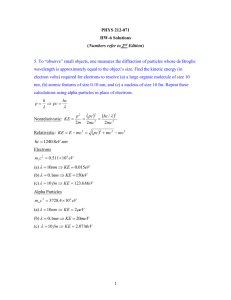hwsol2012_02
advertisement
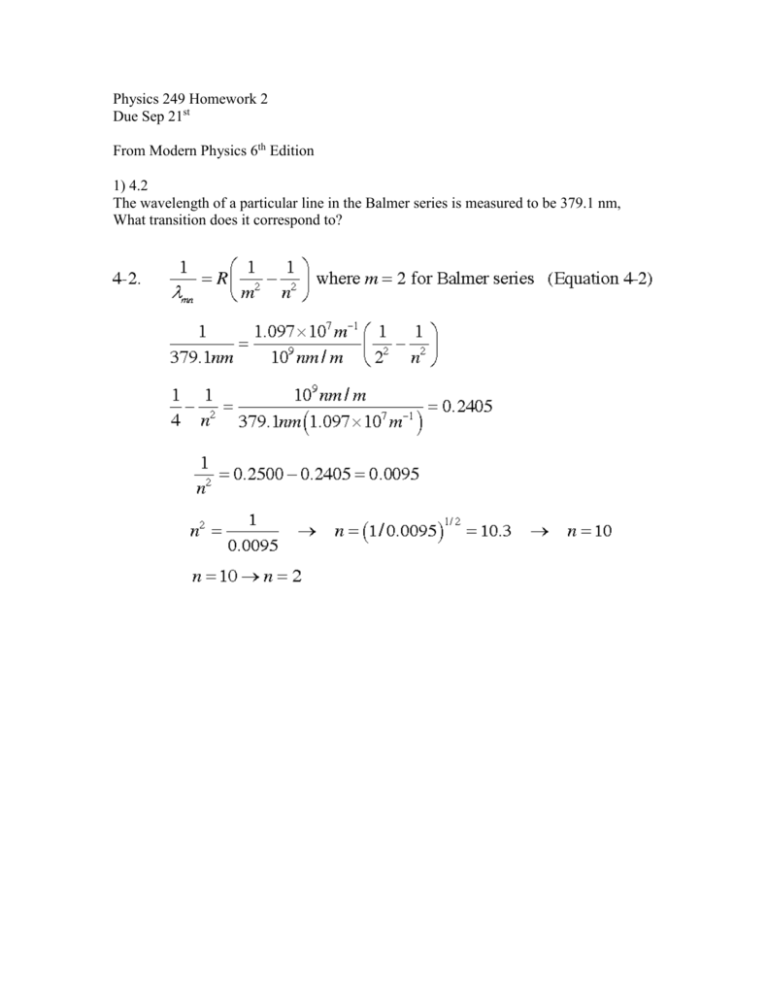
Physics 249 Homework 2 Due Sep 21st From Modern Physics 6th Edition 1) 4.2 The wavelength of a particular line in the Balmer series is measured to be 379.1 nm, What transition does it correspond to? 2) 4.9 What will be the distance of closest approach rd to a gold nucleus for an alpha particle of 5.0 MeV? 7.7 MeV? 12 MeV 3) 4.19 It is possible for a muon to be briefly captured by a proton to form a muonic atom. A muon is identical to an electron except for its mass, which is 105.7 MeV/c2. a) Calculate the radius of the first Bohr orbit of a muonic atom. b) Calculate the magnitude of the lowest energy state. c) What is the shortest wavelength in the equivalent of the Lyman series for this atom? (note it is necessary to use the reduced mass) The reduced mass is a significant correction for the muon but not the electrons. 𝜇𝑒 = 9.11𝑥10−31 𝑘𝑔 𝜇𝜇 = 𝑚 = 1.69𝑥10−31 𝑘𝑔 1 + 𝑚/𝑀 = 2.85x10-4nm 4) 4.36 The transition from the first excited state to the ground state in potassium results in the emission of a photon with a wavelength of 770 nm. If potassium vapor is used in the Frank-Hertz experiment, at what voltage would you expect to see the first decrease in current? 5) 4.43 a) The current I due to a charge q moving in a circle with frequency frev is qfrev. Find the current due to the electron in the first Bohr orbit in A, Amperes. b) The magnetic moment of a current loop is iA, where A is the area of the loop. Find the magnetic moment of the electron in the first Bohr orbit in uses of Am2. This magnetic moment is called the Bohr magneton.

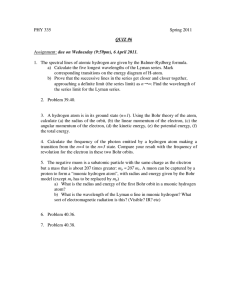
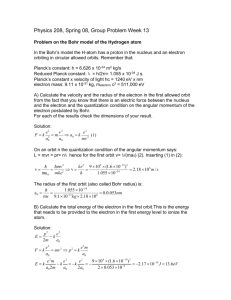
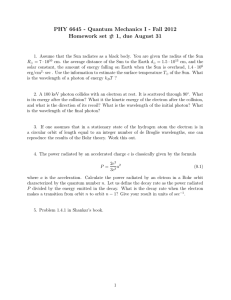
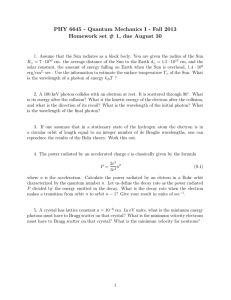

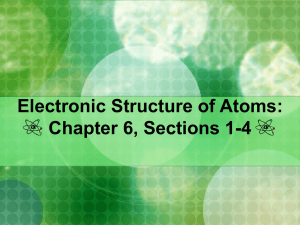
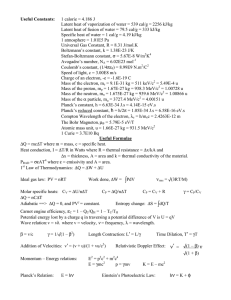
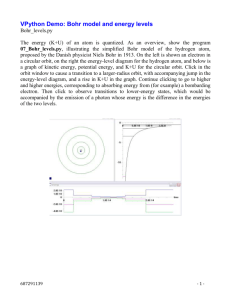
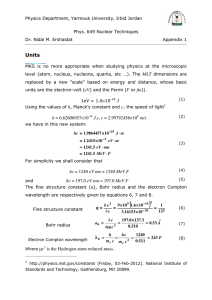
![De Broglie Wavelength Problems 1] A bacterium ( ) in the blood is](http://s3.studylib.net/store/data/006717589_1-c47a62bef3699c440a933fd8dd2e4a77-300x300.png)
